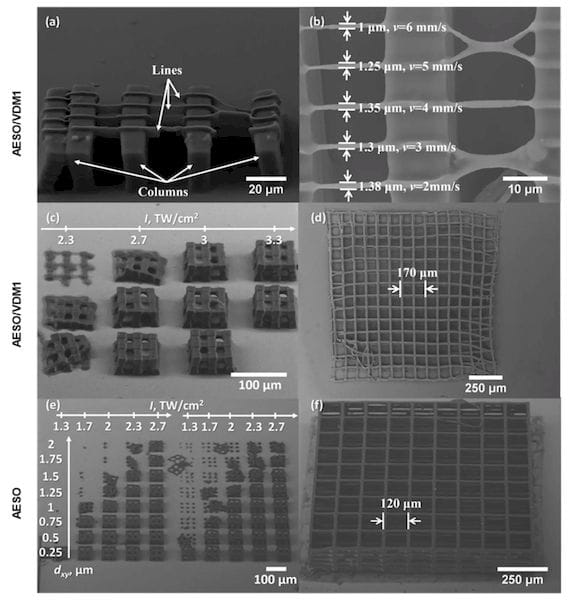
As we explored in a previous article, the overwhelming majority of 3D-printing plastics are made from fossil fuels.
This means their production is associated with climate change and our species’ collapsing habitat. Additionally, new plastics may be in short supply at some point in the future. Fortunately, researchers worldwide are working to expand the portfolio of renewable plastic materials available to the 3D-printing industry.
Most recently, a team of scientists from Kaunas University of Technology and Vilnius University in Lithuania demonstrated a process for creating photopolymer resins made from soybean oil- and lignin-based materials. In a paper published in the journal polymers, the authors described testing these materials to determine their suitability for replacing petroleum-based photopolymers.
The authors explained their motives for seeking such alternatives by saying, “[d]ue to decreasing petroleum recourses, it became crucial to search for alternative materials such as renewable resources.” They turned to natural oils for “their richness in double bonds, which can be polymerized or converted to other functional groups, biodegradability and renewability.”
A prime candidate for the team was acrylated epoxidized soybean oil (AESO), an ultraviolet light or electron beam curable soybean resin. AESO is already industrially available with other chemistries, such as styrene, added to improve its mechanical and thermal properties. The researchers pointed out, however, that “these materials are petroleum-derived and harmful to health.” For this reason, they also explored mixtures of AESO with vanillin dimethacrylate (VDM) or vanillin diacrylate (VDA), made from lignin, “one of the most abundant natural polymers” on Earth.
Key to the experimentation was that were no added photoinitiators or solvents, often found in traditional photopolymers, in their resins, making them more applicable to the fields of biomedicine, micro-optics and nanophotonics.
The authors wrote, “The avoidance of toxic photoinitiators increases the integrity of biodegradable cell-growth scaffolds and reduces the auto-fluorescence while performing microscopy in vitro or in vivo. The absorbing materials are detrimental for the use in micro-optics and nanophotonics due to their reduced optical resilience and induced signal losses. Moreover, the use of plant-derived materials in such technologies would benefit greatly due to their low toxicity, high biodegradability and improved recycling options. Finally, it would reduce the dependency on limited and increasingly expensive fossil resources, as well as greenhouse gas emission, which are the targets of the European Commission initiated ‘Europe 2020’ strategy.”
After concocting the 3D-printing resins made from combinations of these materials, the team used direct laser writing (DLW) 3D lithography to print microscale objects. You may be familiar with DLW used in nanoscale 3D printing, used in medical and optical research. The team 3D-printed microscale bridge objects using ultra-fast laser pulses.
Read more at ENGINEERING.com











An inventive designer has developed a method for producing 3D paper objects using recycled paper and 3D printed molds.